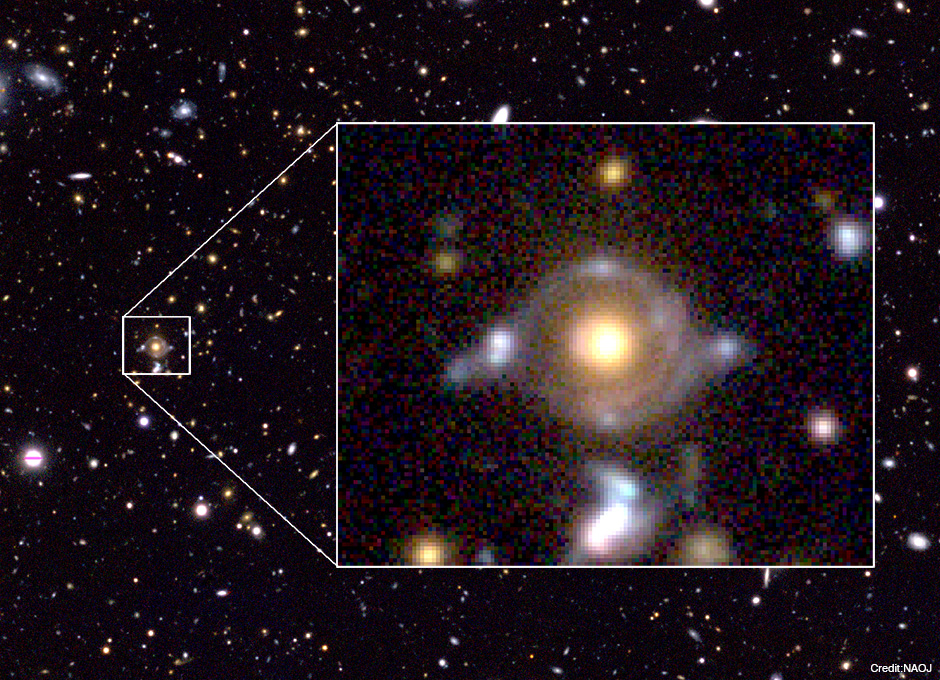Ancient Eye in the Night Sky
Astrophotography・

Subaru Telescope regularly holds a research experience program “Subaru School” for undergraduate students. During the experience program in 2015, a strangely shaped celestial object was discovered by accident. It was followed-up in detail and found to be an extremely rare example of gravitational lensing were the images of two distant galaxies are simultaneously distorted by the gravitational lens effects from the foreground giant galaxy. The object was named “Eye of Horus” because its unique appearance resembles the ancient Egyptian symbol.
Blue Ring and Red Arc
The orange celestial object in the center of the enlarged image is a giant galaxy 7 billion light-years away, which causes the gravitational lens effect. If you look closely at it, you can see that there are a blue ring and red arc around it. These galaxies are behind the object. We confirmed with spectroscopic observations that the red galaxy is 9 billion light-years away and the blue galaxy is 10.5 billion light-years away from Earth. It is extremely rare for a single giant galaxy to have a gravitational lens effect on multiple background galaxies. This was the first example where the precise distance to the background galaxies could be obtained. A Subaru Strategic Program is underway using Hyper Suprime-Cam (HSC), which is an optical imaging camera with a wide field of view mounted at the prime focus of the Subaru Telescope. Although this type of object is rare, the HSC observations cover a wide area of the sky, so it is expected to find around 10 more similar objects. We can investigate how the Universe has expanded by analyzing them carefully. So, it stands out as a celestial object which has great scientific value.
Text by: Masayuki Tanaka (Subaru Telescope)
Translation by: Hiroko Tsuzuki and Ramsey Lundock (NAOJ)
Image Data
| Object | HSC J142449-005322 |
|---|---|
| Telescope | The Subaru Telescope |
| Instrument | Hyper Suprime-Cam |
| Wavelength | Visible light - near infrared (600-900 nanometers) |
| Exposure | 20 minutes |
| Credit | National Astronomical Observatory of Japan |